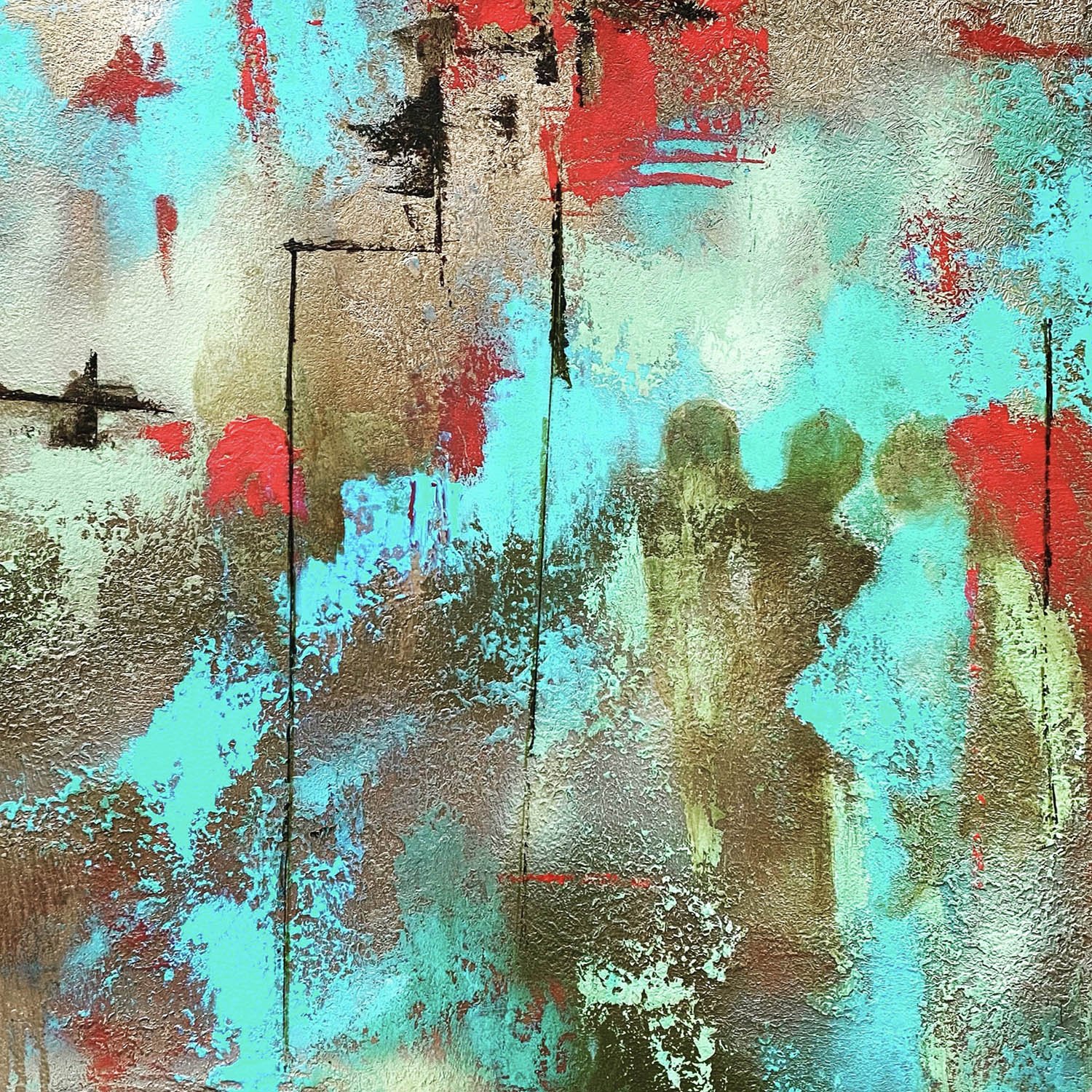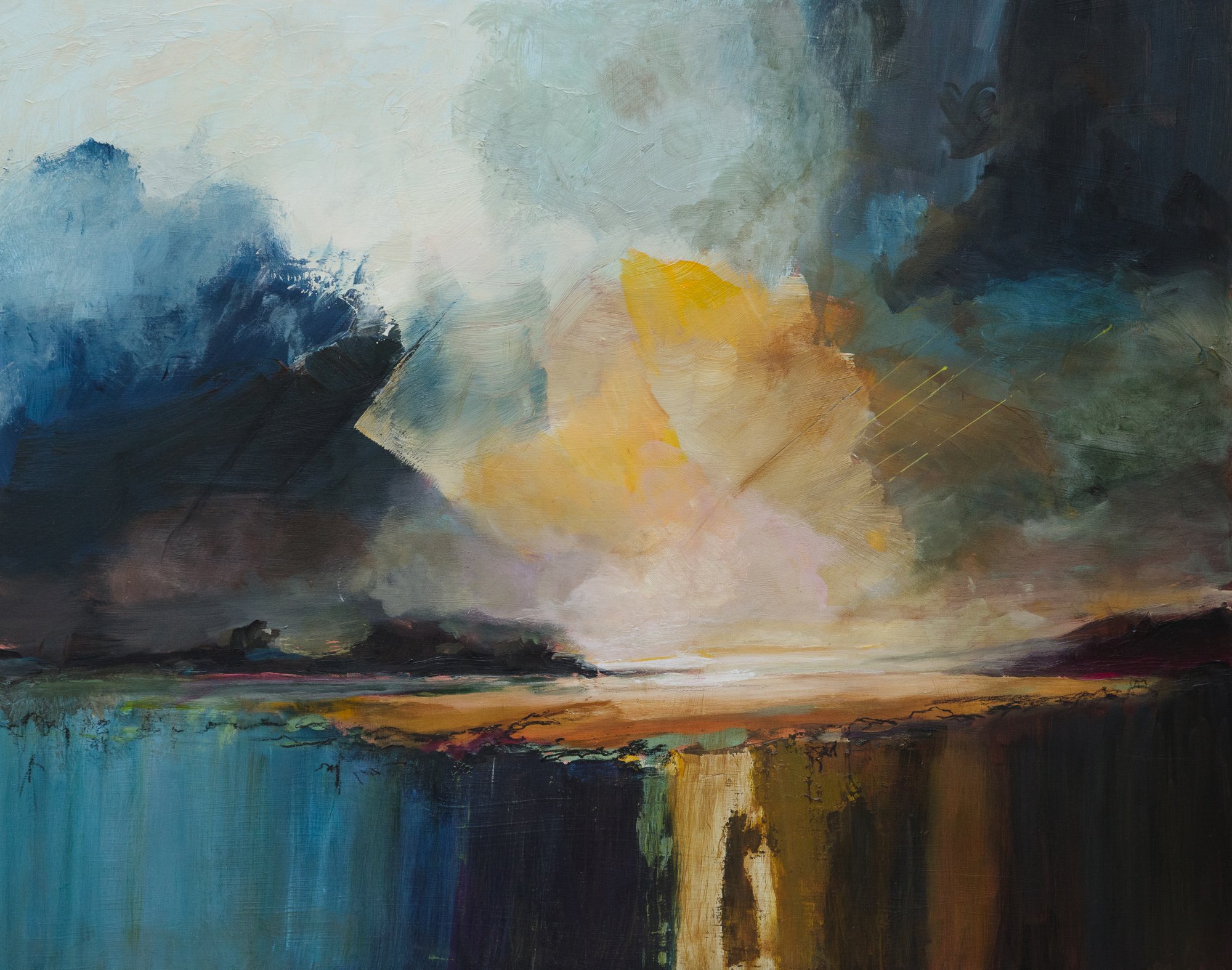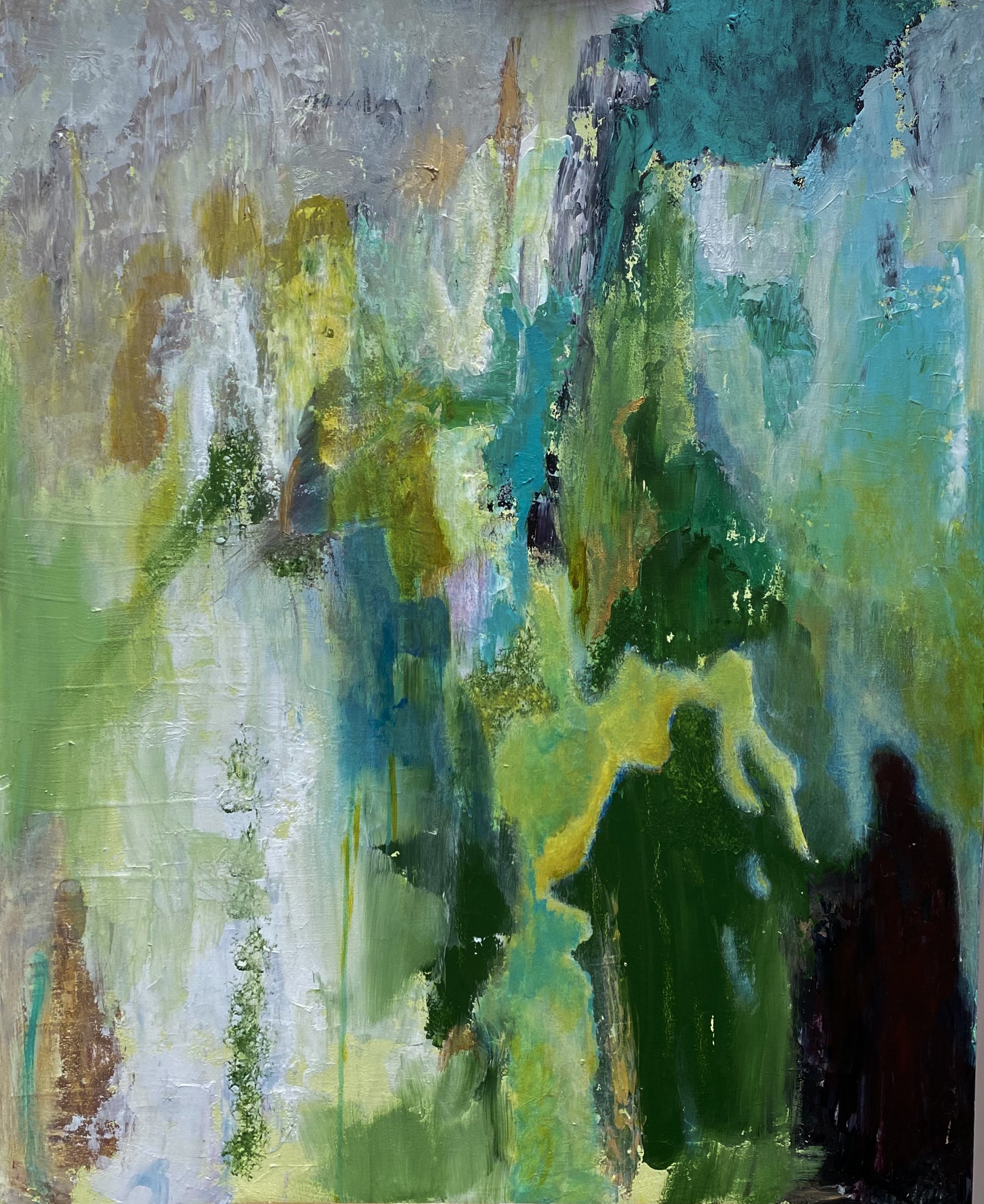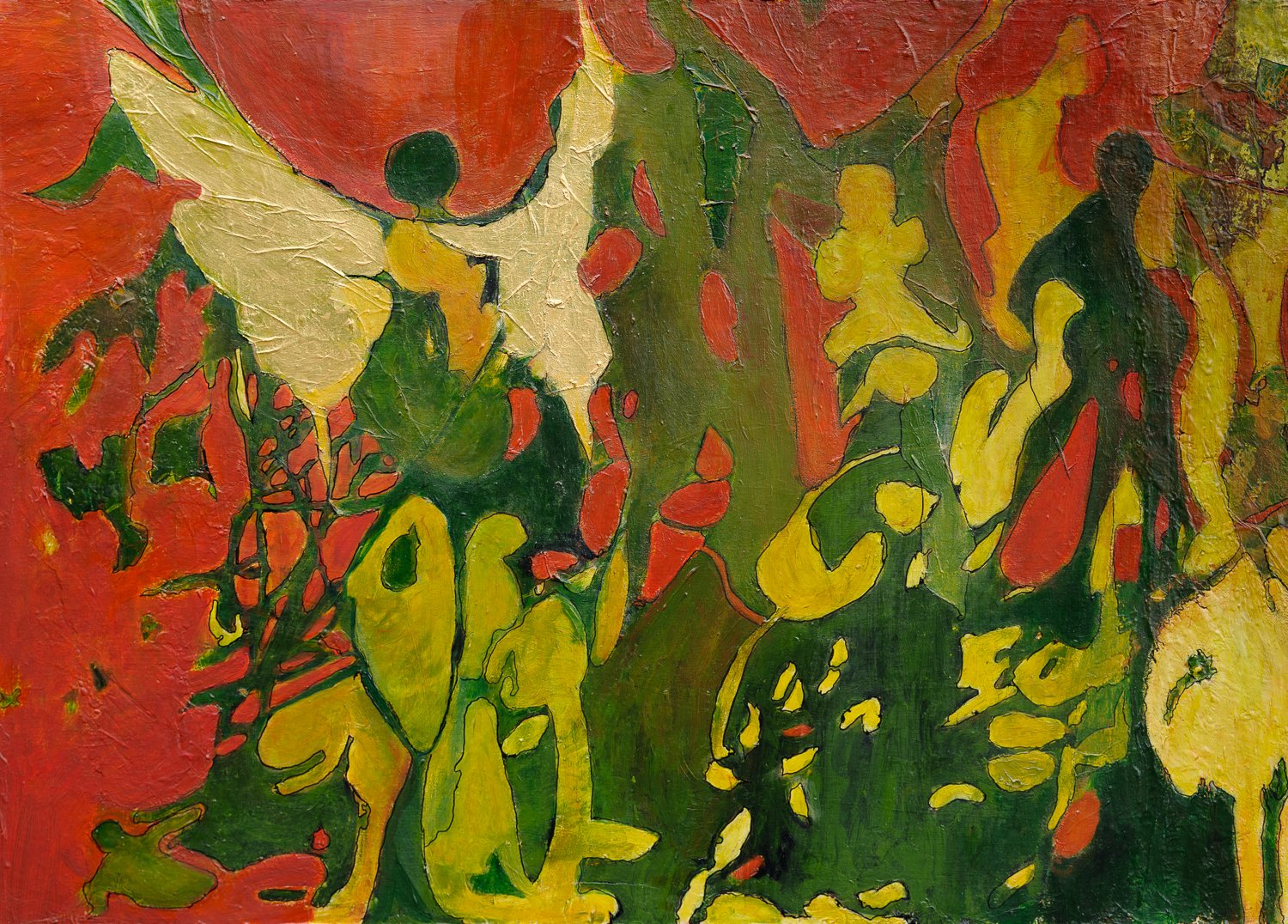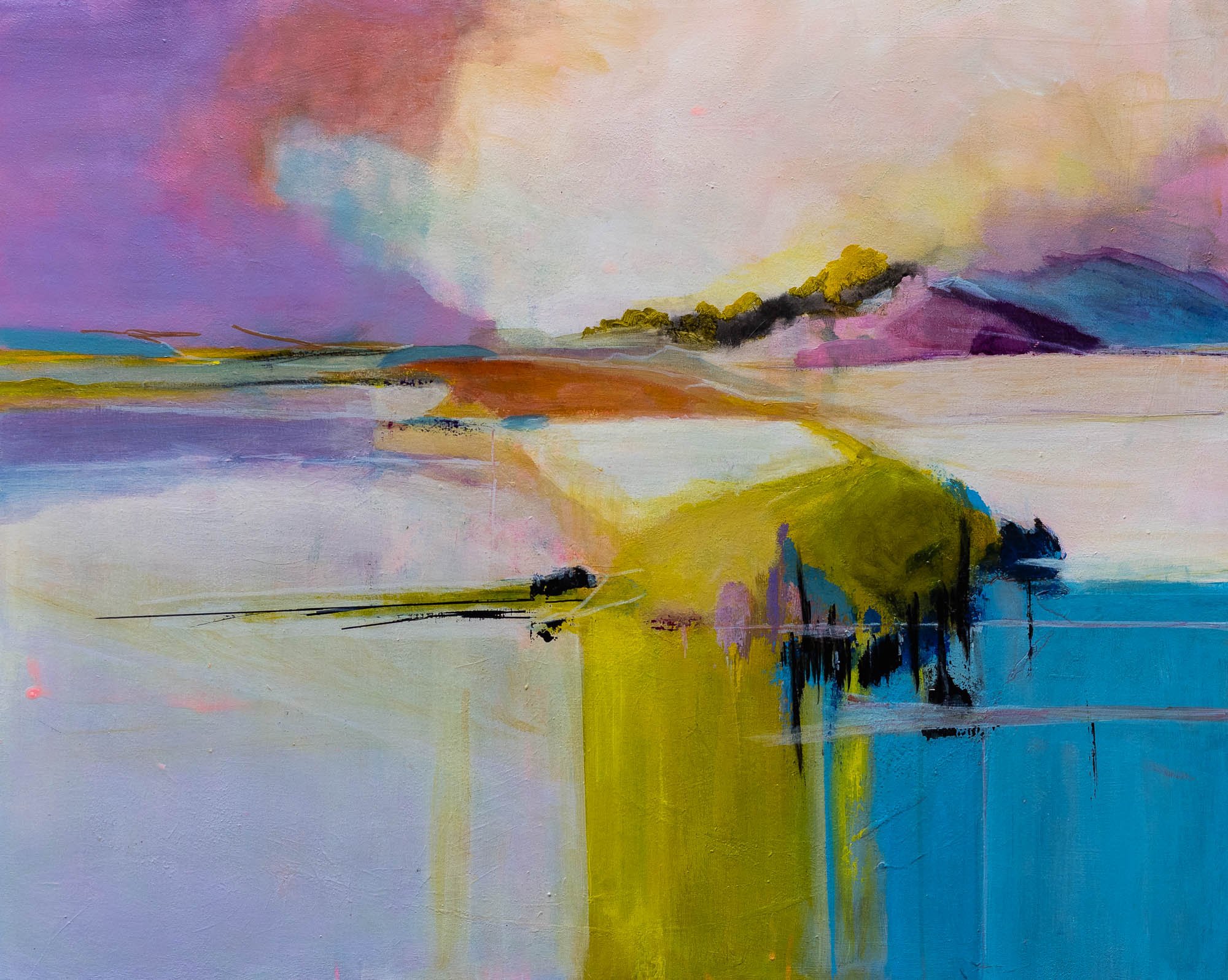ARTIST INTERVIEW: Yeside Linney
Please introduce yourself. What inspired you to become an artist?
I attended a boarding school in England from a young age until my O’ Levels. My parents who lived in Nigeria, were horrified to learn that I had been having art lessons and was considering doing an Art exam along with my core subjects. Anyone from the Nigerian diaspora will tell you their parents gave them three career choices: doctor, lawyer, or engineer: jobs that offer financial and social recognition. So naturally, art was withdrawn from my options. I barely passed parental the test when after college, I became a teacher of English until retirement 11 years ago.
I have always been interested in art: primarily visiting large exhibitions in London. I was coerced into attending an art workshop run locally by a popular contemporary artist. I was so energised by the range of techniques we covered, I signed up for a term, and started researching on Youtube. Lockdown was the turning point when I immersed myself daily, satisfying my ever-growing appetite to learn more, composing original work, rather than copying it, although this is a valuable exercise per se. Posting on Instagram gave me confidence to forge ahead because my followers have been and continue to be supportive. Yet this exposure also made me feel inadequate. Last year, I was awarded two national awards in The Women in Art Prize (formerly The Hollybush Emerging Woman Painter Prize.) I started to take myself more seriously and with that comes added pressure which is self-inflicted.
How have you been able to reveal your Nigerian roots through the abstract nature of your work?
I haven’t been able to figure this out fully yet. Reading and discovering about my own culture is on-going. A year ago, I began my Reclamation series which started as an acknowledgment of the colonisation of my own education, but it has rapidly developed into a self-exploration of coming to terms with two identities: having a British upbringing with Nigerian birthright and the inevitable feeling of “otherness”. I am beginning to negotiate the boundaries between the visual legacies of figuration and abstraction, blurring the boundaries between both to reframe the Black lived experience. Some ideas have raised challenges since I possess few photographs of myself as a child. The visual language I use is therefore changeable as my sense of self progresses through acquired knowledge and confidence.
You keep a notebook by your bed to write in ideas for future pieces. What is the last entry in your notebook?
My bedside notebook is essential to record and rework images and words in my mind. It’s important to offload these or I am unable to sleep. Recently, I have been dreaming of artwork I might produce, so a quick outline sketch can be suffice before returning to sleep. I’m not always quick enough to retain the images, though. The last entry in my notebook reads: There are years that ask questions and years that answer.
Thinking about your most recent work, what was your creative process from start to finish?
I am currently working on two contrasting series: one influenced by Turner experiences at Petworth, with the inevitable focus on light; the other is embracing facets/figure in Yoruba Mythology. The latter emerged from reading about Orishas, gods, spirits. One shown here is a nod to Yemaya, a major water spirit, a protector of women. Though the face points downwards, it is both powerful and soulful. Hence shades of blue drive the palette. Hair in black culture is important so I made the decision early on to allow the water to shape the hair, choosing to use a palette knife to mould the hair.
The background was applied first: layer after layer of rhythmic brushstrokes where I embed more of my own unspoken history.
What are the attributes of an interesting landscape to capture?
Inherently, landscapes are a vital record of our past and an insight to how we engage with nature. I believe in creating my own poetic and emotional truth, and surface delights of accidental mark making, shifting the focus from the observed scene.
Why is colour important in conveying the narrative in your work? Are there any colours in particular that you enjoy using?
I continue to build my understanding of colour, developing a better awareness of the subtleties of colour mixing, temperature, and saturation. Colour helps shapes the mood, light, and depth of my work to underpin the way I process and contextualise my narrative. Recently, I find myself drawn to earth tones and also alizarin crimson which is a deep cool red with a blue undertone. Transparent Raw sienna is often my default selection in harmonising a painting.
What do you hope to achieve through your paintings? How would you like the viewer to feel?
Implied narrative is important whether the work is partly or fully abstracted. I choose titles carefully. Most of my works are brooding, therefore I like viewers to go beyond the obvious, inviting contemplation and conversation.
What are your future aspirations as an artist?
I have three aspirations:
1. The first is to sketch more frequently and be more confident doing so in public.
2. I would like a large solo show by the time I’m in my mid-70s, exhibiting a body of work that is a confident reflection of me coming to terms with a dual identity.
3.I want to grow my monthly newsletter which is an important appendage to my daily practice. It has grown since inception a year ago – almost 200 subscribers - and now reads more like an Art magazine where I feature a significant work not previously circulated on social media; I spotlight a well-known artist I admire who has given me permission to do so. And yes, the bulletin includes references to exhibitions I’m in as well as my monthly culture fest. This helps subscribers understand me holistically.
Link to past newsletters: https://www.yeside.com/newsletter/
Why do you think art is important in society?
Above all, Art helps us to understand who we are as human beings because it is a universal language. It has the power to shape identity in a variety of ways, by reflecting and celebrating cultural and national identity; by providing a means of self-expression, and challenging social norms. It is a conduit for emotional expression, intellectual growth, encourages conversation and sparks creativity. It helps us to perceive the world through different lenses, nurturing a thought process that can be beneficial in any walk of life.








